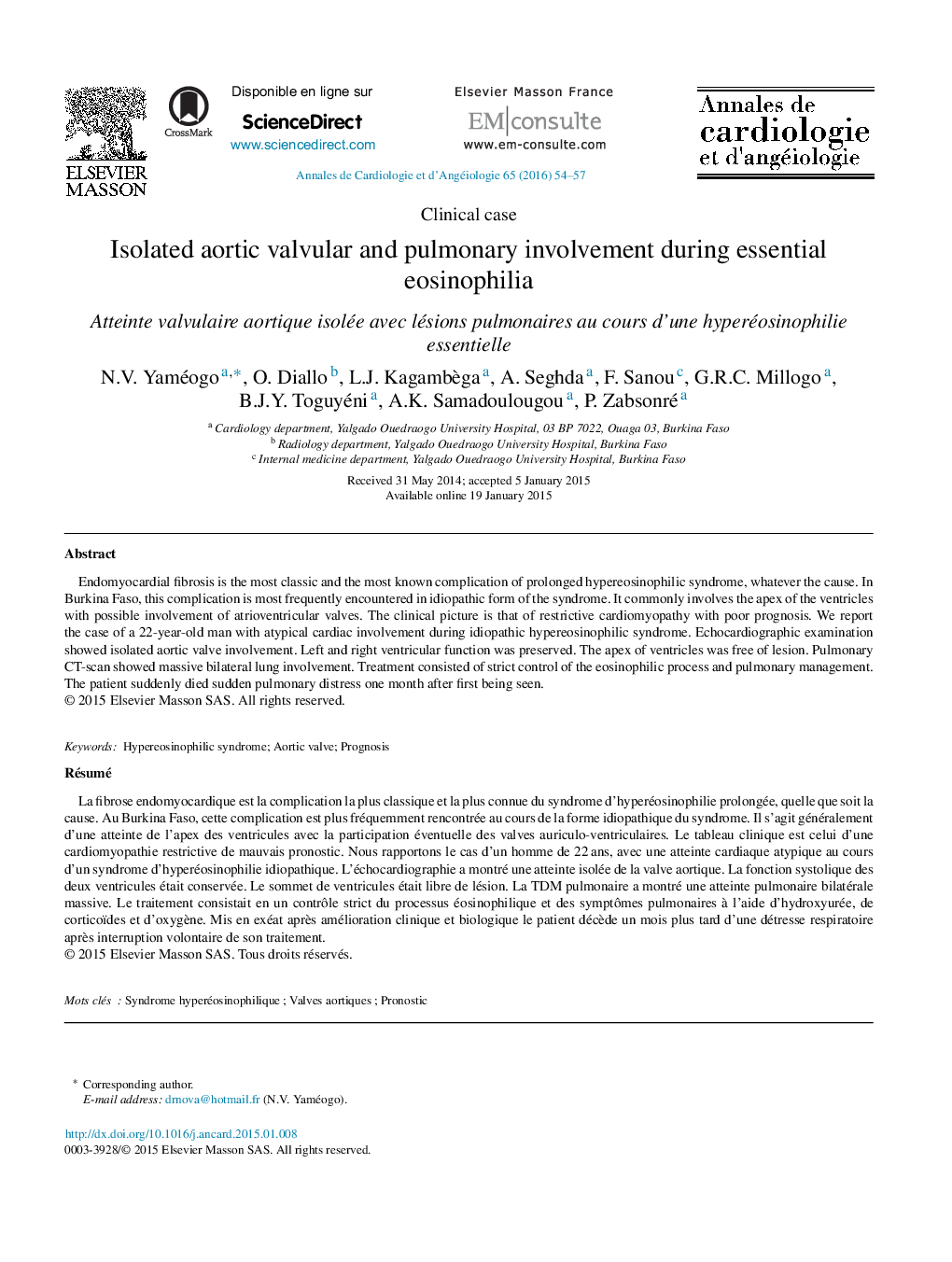| Article ID | Journal | Published Year | Pages | File Type |
|---|---|---|---|---|
| 2868515 | Annales de Cardiologie et d'Angéiologie | 2016 | 4 Pages |
Endomyocardial fibrosis is the most classic and the most known complication of prolonged hypereosinophilic syndrome, whatever the cause. In Burkina Faso, this complication is most frequently encountered in idiopathic form of the syndrome. It commonly involves the apex of the ventricles with possible involvement of atrioventricular valves. The clinical picture is that of restrictive cardiomyopathy with poor prognosis. We report the case of a 22-year-old man with atypical cardiac involvement during idiopathic hypereosinophilic syndrome. Echocardiographic examination showed isolated aortic valve involvement. Left and right ventricular function was preserved. The apex of ventricles was free of lesion. Pulmonary CT-scan showed massive bilateral lung involvement. Treatment consisted of strict control of the eosinophilic process and pulmonary management. The patient suddenly died sudden pulmonary distress one month after first being seen.
RésuméLa fibrose endomyocardique est la complication la plus classique et la plus connue du syndrome d’hyperéosinophilie prolongée, quelle que soit la cause. Au Burkina Faso, cette complication est plus fréquemment rencontrée au cours de la forme idiopathique du syndrome. Il s’agit généralement d’une atteinte de l’apex des ventricules avec la participation éventuelle des valves auriculo-ventriculaires. Le tableau clinique est celui d’une cardiomyopathie restrictive de mauvais pronostic. Nous rapportons le cas d’un homme de 22 ans, avec une atteinte cardiaque atypique au cours d’un syndrome d’hyperéosinophilie idiopathique. L’échocardiographie a montré une atteinte isolée de la valve aortique. La fonction systolique des deux ventricules était conservée. Le sommet de ventricules était libre de lésion. La TDM pulmonaire a montré une atteinte pulmonaire bilatérale massive. Le traitement consistait en un contrôle strict du processus éosinophilique et des symptômes pulmonaires à l’aide d’hydroxyurée, de corticoïdes et d’oxygène. Mis en exéat après amélioration clinique et biologique le patient décède un mois plus tard d’une détresse respiratoire après interruption volontaire de son traitement.
